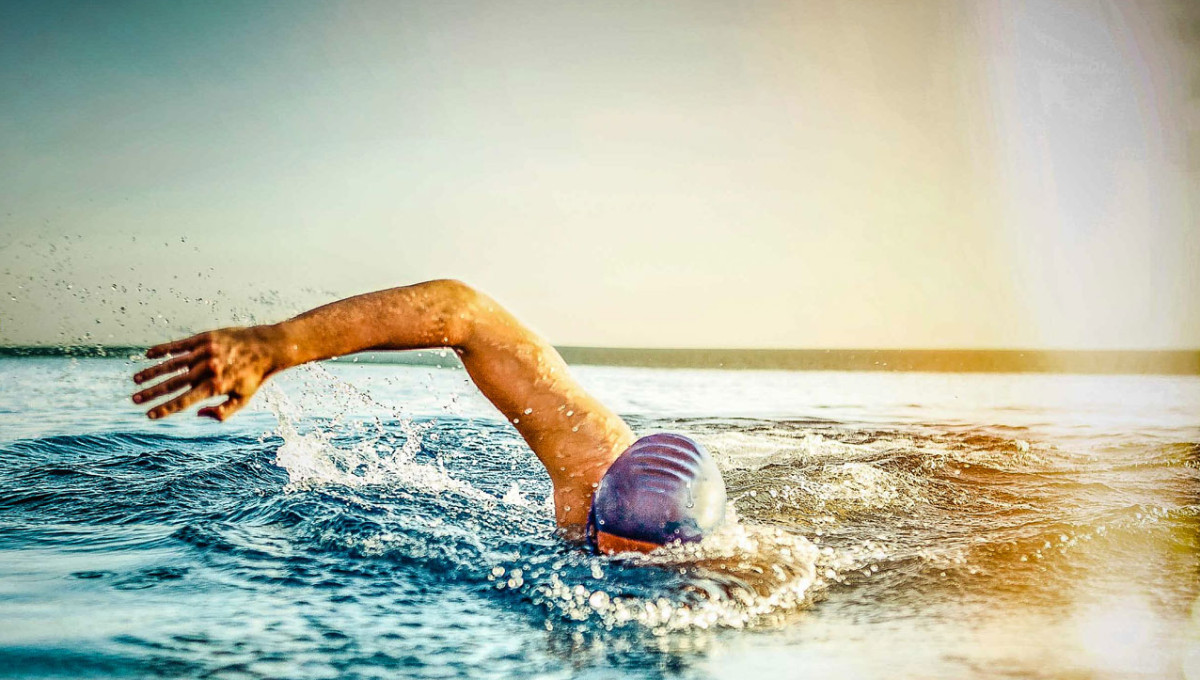This article originally appeared in a 2016 TTF Newsletter and TTF website.
Living in Ontario we fall victim to a condensed racing season—from late May until mid-September. Since there’s really no point complaining about it (can’t change it) the only option is to embrace this fact.
I actually prefer training throughout the winter, putting most of my hard work in over those long dark months. Come springtime, it’s like a release into the wild, a free-for-all where the fruits of your labour start to thrive. At least that’s on the bike and the run – we still have to wait a little longer for open water swims. Can’t you hear those still glass lakes calling: “Take the plunge”, “Make me ripple”? Soon triathletes, soon…
My first suggestion takes inspiration from the 1993 Disney classic Cool Runnings. If you’ll recall, our heroes the Jamaican Bobsled Team spent time acclimatizing in the tiki-bar walk-in freezer (note: in no way do I condone actually spending time in a freezer). The point here is that over the weeks ahead of their departure to Calgary, the team slowly built a tolerance to the elements. Brilliant!
TAKE A COLD SHOWER
Starting now, begin to lower the average temperature on your daily shower (hey, your hot water bill may just come down too). At the end of your time, crank it all the way cold. Hooo-ahh! Start with 5 seconds. Notice what happens to your heart rate, your breathing, your muscle response. Slowly over the next few weeks keep lowering that average and keep increasing the duration of the “cold shock”. See if you can get it up to between 2-5 minutes. How have those reactions changed? Breathing calm? No heart rate spikes? Muscles relaxed? Most likely your body will get used to it – it might even crave it! I’m not going to talk about the benefits of post workout ice-baths in this article, but add decreasing inflammation to the building of mental toughness and BAM we’ve got ourselves a pretty “cool” tool to deal with early season lake temperatures.
A FEATHER IN YOUR CAP
As a bald man I’m quite aware that the head is the number one area for heat loss on your body; so when you cannonball into that cold water, it’s best to prevent any unnecessary leaks of warmth. You may wear a neoprene cap underneath your race swim cap as long as it doesn’t interfere with identifying you to the organizers and the lifeguards. Nice!
PLUG-IN
If you don’t currently wear earplugs in the water think about picking up a pair. I began wearing them after one particular swim session where I went completely mental trying to get drips out that were apparently stuck in my brain. I did the Fred Flintstone dance all weekend; remember when he dropped a bowling ball on his toe (sorry to all those born in the 90s for the obscure reference)? Preventing that feeling from happening again was my primary concern, but I ended up learning a few more benefits too. They are NOT noise cancelling plugs like the kind you use on an airplane, but they do drown out (sorry, bad choice of words) lots of other distractions, allowing you to focus within yourself and on your own stroke. Awesome for a race with 500 of your closest triathlete friends! But one more thing too – earplugs prevent much needed heat from escaping. Pick some up at your local drug store.
SLAP IT ON
So what about those appendages? Let’s be honest, you’re not going to wear gloves or booties in a race. While you’re at the drugstore grab a tub of Vaseline. Slather it on the top of your feet and the back of your hands. You can even put it on your cheeks, forehead and nose. That layer may just be enough to trap in more heat and protect your skin. Note – be careful not to get any on your wetsuit, the oil is not good for it.
BREATH
I encourage people to perform this exercise in all water, not just open water. When you first enter, take a deep breath and then exhale all contents from your lungs. Let your body relax and sink down naturally. Pop back up when you’re ready and repeat as many times as you need to. This simple exercise not only prepares you physically for your impending workout, but there’s something Zen about easing into the water and making peace with it rather than battling it as your enemy. Switch mental gears on this beautiful resource and learn to love what it can offer us land-bearing animals.
JUST DO IT
My last piece of advice is to simply get out there and get used to it. Showers are one thing, but practicing and racing in open water is the best. Make it part of your regular weekly schedule and soon it’s no big deal. Seriously.
There’s a very famous race called the Norseman Xtreme Triathlon. Participants get to jump off of a ferryboat in the dark and swim amongst snow-covered mountains back to land before biking and scaling a mountain (easy, right?). The breakwater at Ontario Place is a long way from those Norwegian fiords so think about these brave souls the next time you practice in one of our province’s plentiful and pristine lakes, reservoirs, or rivers.
Finally I’ll leave you with this thought: If worse comes to worst I’m not going to say don’t pee in your wetsuit, but I’m not, not going to say it either. Wait, does that mean I did say it? You didn’t/did hear it here!
Have fun out there and remember to make smart decisions and be safe.
-Coach Jas
[su_button url=”http://tritrain.ca/connect/” target=”self” style=”flat” background=”#8dc73f” color=”#FFFFFF” size=”4″ wide=”no” center=”yes” radius=”auto” icon=”” icon_color=”#FFFFFF” text_shadow=”none” desc=”” onclick=”” rel=”” title=”” class=”button-home”]Contact Coach Jason[/su_button]
